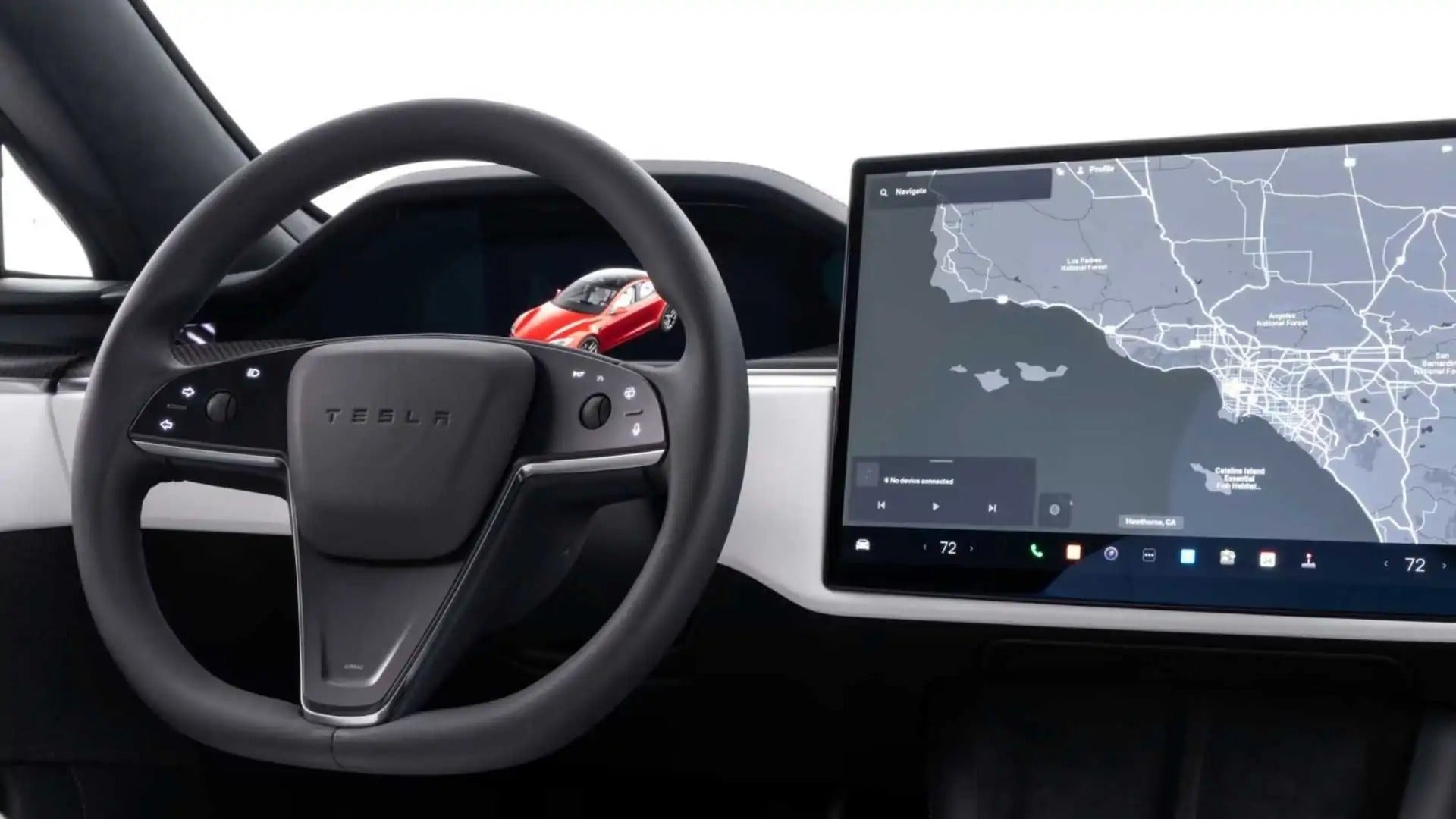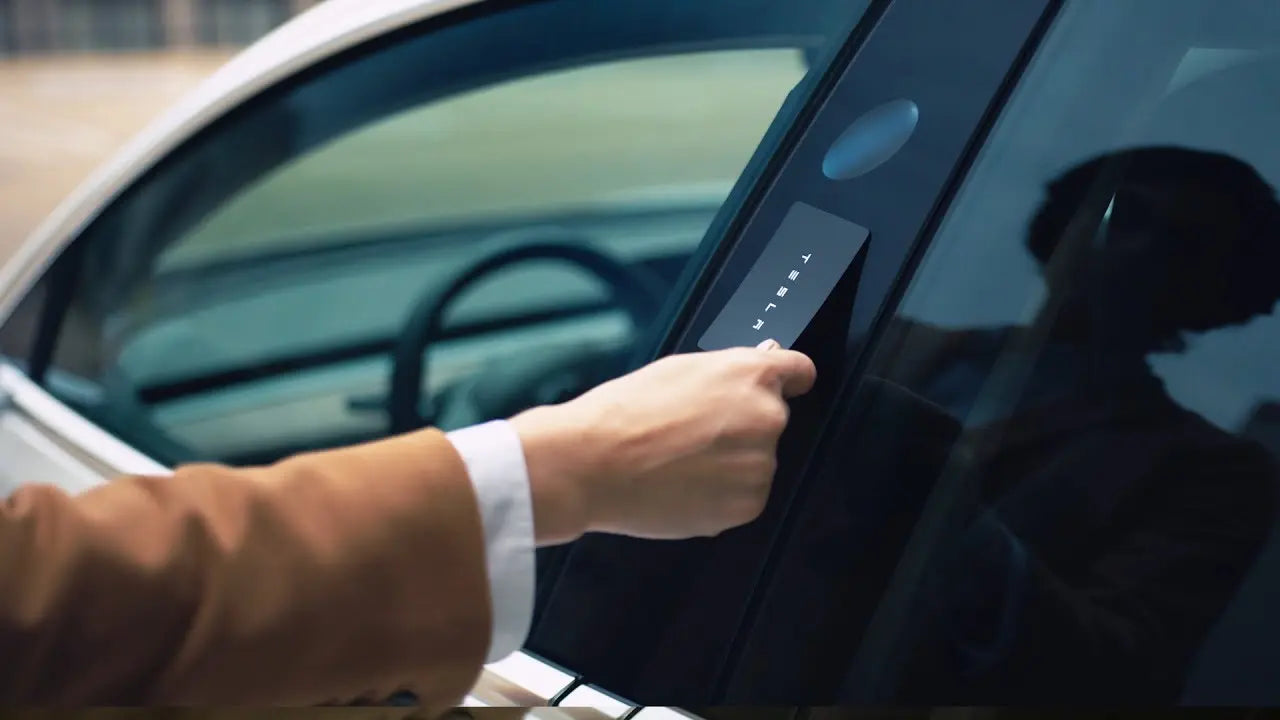
How to Reboot Your Tesla?
Źródła obrazów: WewnątrzEV
Ponowne uruchomienie Tesli może rozwiązać różne drobne problemy z oprogramowaniem samochodu.
Przejdź do sekcji
Dlaczego warto ponownie uruchomić komputer?Miękki restart (reset ekranu dotykowego lub ponowne uruchomienie za pomocą kółka przewijania)
Pełny restart (cykl zasilania)
Resetowanie konfiguracji
Inne hacki
Dlaczego warto ponownie uruchomić komputer?
- Zamrożony ekran dotykowy
- Znikająca opcja menu
- Autopilot nie włącza się
- Samochód nie chce przejść w tryb jazdy (typowe zjawisko po aktualizacji oprogramowania)
Istnieje kilka sposobów wykonania ponownego uruchomienia, zależnie od rodzaju występującego problemu:
Miękki restart (reset ekranu dotykowego lub ponowne uruchomienie za pomocą kółka przewijania)
Ta metoda umożliwia ponowne uruchomienie ekranu dotykowego oraz systemu informacyjno-rozrywkowego samochodu bez konieczności całkowitego wyłączania pojazdu.
- Ustaw samochód w trybie parkowania
- Modele S, 3 i
Y : poprzez naciśnięcie przycisku na końcu dźwigni zmiany biegów.

Źródło Instrukcja obsługi modelu Y
- Model X: Wybierz Park z paska trybu jazdy na ekranie dotykowym lub naciskając przycisk „P” na konsoli środkowej

Źródło: Instrukcja obsługi modelu X
- Przytrzymaj dwa przyciski przewijania po obu stronach kierownicy przez około 10 sekund, aż zobaczysz, że ekran główny się restartuje. (Ekran dotykowy modeli S i X wyświetla ikonę poduszki powietrznej podczas restartu)

Źródło: Instrukcja obsługi Tesli Model Y
- Puść przyciski, gdy zobaczysz logo Tesli
- Ekran uruchomi się ponownie i powinien zacząć działać ponownie za około 30 sekund
Uwagi:
- Jeśli po kilku minutach ekran dotykowy nadal nie reaguje lub zachowuje się nietypowo, spróbuj wyłączyć i ponownie uruchomić pojazd (jeśli to możliwe).
- Miękkie restarty można wykonać podczas jazdy, ale Model 3 i
Y nie wyświetlają prędkościomierza, a ostrzeżenia bezpieczeństwa są wyłączane podczas tego procesu. Dlatego zaleca się wykonywanie restartu tylko wtedy, gdy samochód jest zaparkowany.
Pełny restart (cykl zasilania)
Ta metoda powoduje całkowite wyłączenie samochodu i jest przydatna, jeśli miękki restart nie rozwiąże problemu.
- Przełącz Teslę w tryb parkowania
- Wyłącz samochód: Sterowanie dotykowe > Bezpieczeństwo > Wyłącz zasilanie.
- Poczekaj kilka minut: Usiądź w samochodzie i nie dotykaj pedału hamulca ani nie otwieraj drzwi, a także nie dotykaj ekranu dotykowego, ponieważ spowoduje to ponowne uruchomienie samochodu.
- Ponownie uruchom samochód: Po około 2–3 minutach naciśnij pedał hamulca lub dotknij ekranu dotykowego, aby uruchomić pojazd.
Resetowanie konfiguracji
Czasami wystarczy po prostu zmienić konfigurację oprogramowania Tesli.
- Zmień rozmiar i/lub wzór koła: Sterowanie dotykowe > Serwis > Konfiguracja koła
- Spowoduje to nie tylko ponowne uruchomienie samochodu ze zmienioną konfiguracją, ale także odświeżenie konfiguracji całego samochodu.
- Przywróć kołom właściwy kształt
- Ponowne uruchomienie
Notatka: Możesz również zresetować konfigurację poprzez zmianę języka, ale samochód uruchomi się ponownie w nowym języku, a wszystkie menu staną się czytelne dopiero po ponownej zmianie języka.
Inne hacki
Jeśli ponowne uruchomienie nie rozwiąże problemu, możesz wypróbować również te inne sposoby
- Wyczyść komputery pokładowe: Im dłuższa historia podróży, tym większe prawdopodobieństwo braku stabilności komputerów.
- Wyczyść poprzednie miejsca docelowe: Wyczyść zapisane lokalizacje nawigacyjne, ale rzadko odwiedzane.
- Odłącz wszystkie urządzenia USB: Jeśli odłączenie urządzenia USB rozwiąże problem, spróbuj zmniejszyć liczbę plików na pamięci USB.
- Odłącz telefon Bluetooth: Może to stanowić problem, jeśli w telefonie jest dużo kontaktów, które zostają załadowane do pamięci samochodu po podłączeniu telefonu.
Wniosek
Te metody ponownego uruchamiania powinny pomóc rozwiązać większość drobnych problemów związanych z oprogramowaniem w Twojej Tesli. Jeśli problemy będą się powtarzać, może być konieczne wykonanie twardego resetu fabrycznego Tesli. Wiąże się to z odłączeniem akumulatora 12 V i akumulatora wysokonapięciowego. Jednak najlepiej skontaktować się z pomocą techniczną Tesli w celu uzyskania takiej pomocy, ponieważ może to mieć niepożądane skutki uboczne.
Podoba Ci się to, co przeczytałeś? Subskrybuj nasz biuletyn i przeglądaj nasze najlepiej sprzedające się Więcej informacji znajdziesz tutaj.





Zostaw komentarz
Ta strona jest chroniona przez hCaptcha i obowiązują na niej Polityka prywatności i Warunki korzystania z usługi serwisu hCaptcha.